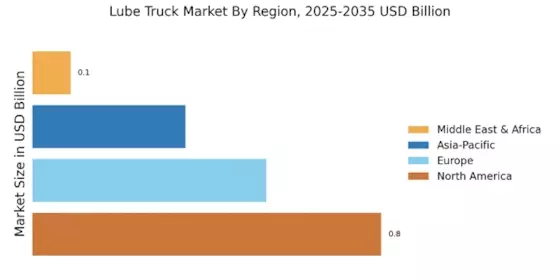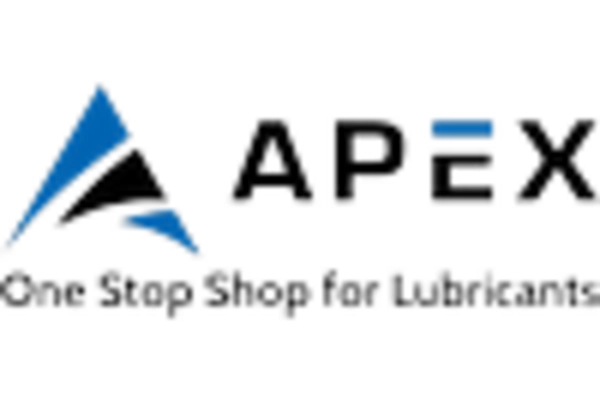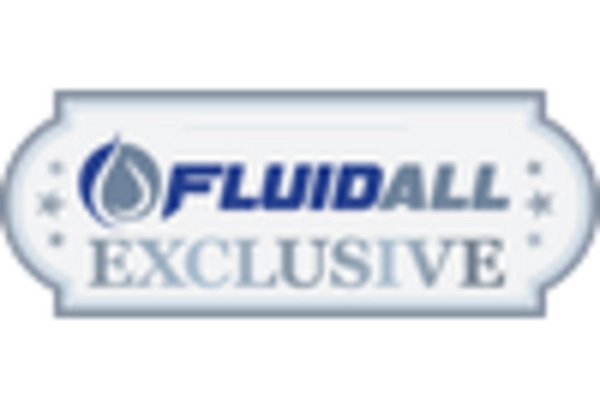Rising Oil and Gas Sector Activities
The Lube Truck Market is closely tied to the activities within the oil and gas sector, which continues to expand due to increasing energy demands. As exploration and production activities ramp up, the need for reliable lubrication solutions becomes paramount. In 2025, the oil and gas sector is expected to drive a significant portion of the demand for lube trucks, with estimates suggesting a growth contribution of approximately 4.8%. This correlation indicates that as the oil and gas industry evolves, so too does the Lube Truck Market, adapting to meet the specific needs of this sector. The reliance on lube trucks for efficient operations underscores their importance in supporting the energy industry's infrastructure.
Expansion of Fleet Management Services
The Lube Truck Market is benefiting from the expansion of fleet management services, which are increasingly being adopted by companies to optimize their operations. As businesses seek to enhance efficiency and reduce operational costs, the integration of lube trucks into fleet management systems becomes essential. In 2025, the market is projected to see a growth rate of approximately 5.5% due to the rising adoption of these services. This trend suggests that companies are recognizing the value of comprehensive fleet management, which includes regular maintenance and lubrication. The emphasis on fleet optimization indicates a broader shift within the Lube Truck Market towards integrated solutions that enhance overall operational effectiveness.
Regulatory Compliance and Safety Standards
The Lube Truck Market is significantly influenced by stringent regulatory compliance and safety standards imposed by various governmental bodies. These regulations often mandate the use of specialized equipment for the safe transportation and storage of lubricants. As industries strive to adhere to these regulations, the demand for lube trucks equipped with advanced safety features is expected to rise. In 2025, it is estimated that compliance-related investments will account for a substantial portion of the market growth. This trend indicates that companies are prioritizing safety and environmental considerations, thereby driving innovation within the Lube Truck Market. The emphasis on compliance not only enhances operational safety but also fosters a culture of responsibility among businesses.
Technological Innovations in Lube Truck Design
The Lube Truck Market is witnessing a wave of technological innovations that enhance the efficiency and functionality of lube trucks. Advancements such as automated lubrication systems, telematics, and real-time monitoring capabilities are becoming increasingly prevalent. These technologies allow for precise lubrication, reducing waste and improving overall operational efficiency. In 2025, the integration of smart technologies is projected to contribute to a market growth rate of around 6.5%. This trend suggests that companies are investing in modern lube trucks to leverage these innovations, which not only streamline operations but also provide valuable data for maintenance planning. The focus on technology indicates a shift towards more intelligent and connected solutions within the Lube Truck Market.
Increasing Demand for Efficient Maintenance Solutions
The Lube Truck Market experiences a notable surge in demand for efficient maintenance solutions across various sectors, including construction, mining, and transportation. As machinery and vehicles require regular lubrication to ensure optimal performance, the need for lube trucks becomes increasingly critical. In 2025, the market is projected to grow at a compound annual growth rate of approximately 5.2%, driven by the rising awareness of preventive maintenance. Companies are investing in lube trucks to minimize downtime and enhance productivity, which indicates a shift towards more proactive maintenance strategies. This trend suggests that the Lube Truck Market is likely to expand as businesses recognize the value of maintaining their equipment in peak condition.


















Leave a Comment